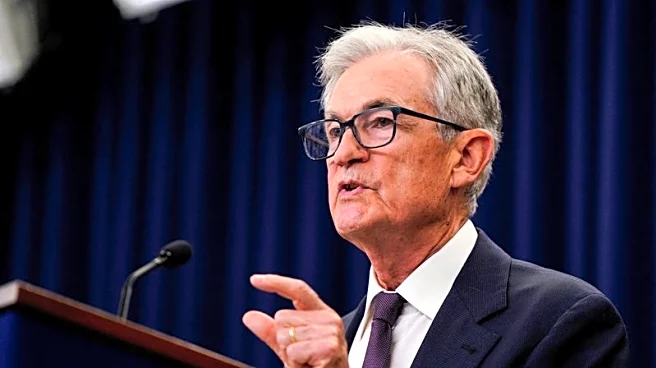What's Happening?
Federal Reserve Chair Jerome Powell has announced that the central bank's quantitative tightening (QT) process may soon conclude. QT, initiated in 2022, aims to reduce the Fed's balance sheet by allowing bonds to mature without replacement, decreasing holdings from $9 trillion to $6.6 trillion. Powell highlighted signs of tightening liquidity conditions, such as firming repo rates and temporary pressures on specific dates. The Fed's reverse repo facility, crucial for managing short-term rates, has seen usage drop significantly, indicating effective reserve reduction. Powell defended the Fed's ample reserves regime, emphasizing its role in supporting economic and financial stability.
Why It's Important?
The nearing end of QT holds significant implications for financial markets and the economy. As the Fed reduces its balance sheet, potential liquidity scarcity could complicate the Fed's ability to maintain its interest rate targets, leading to increased market volatility. The Fed's balance sheet management has faced criticism, with Treasury Secretary Scott Bessent accusing the central bank of mission creep. Concerns have also been raised about the Fed's interest rate management tools, which have resulted in substantial payouts to financial firms. Powell warned against removing the Fed's interest-paying powers, cautioning that such a move could lead to financial market stress.
What's Next?
The Fed is monitoring various indicators to determine the timing for ending QT. While some officials believe there is sufficient liquidity in the financial system, the Fed must balance the need to reduce its holdings with the risk of unsettling money markets. Powell did not specify the extent of the balance sheet reduction, but a survey of financial institutions projected a January 2026 end-date for QT, with the balance sheet size at $6.2 trillion. Effective interest rate management will be crucial for the Fed in maintaining financial stability as it approaches the end of QT.
Beyond the Headlines
The Fed's approach to balance sheet management and interest rate control has broader implications for monetary policy and financial stability. The use of the balance sheet as a policy tool has sparked debate about the central bank's role in the economy. The Fed's ability to adapt its tools and strategies in response to changing economic conditions will be critical in ensuring long-term stability. As the Fed moves towards the end of QT, it must consider the potential impact on market liquidity and the broader financial system.












